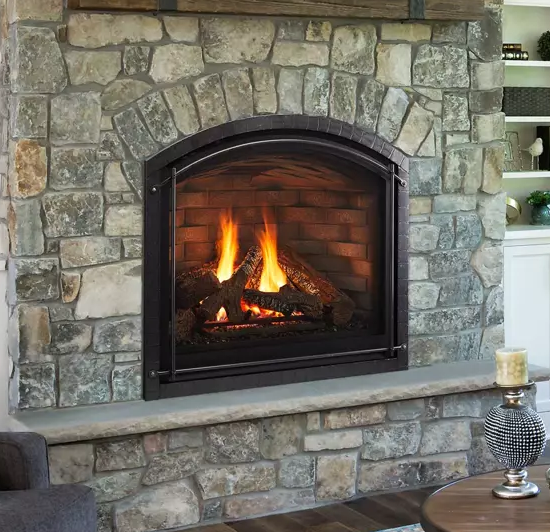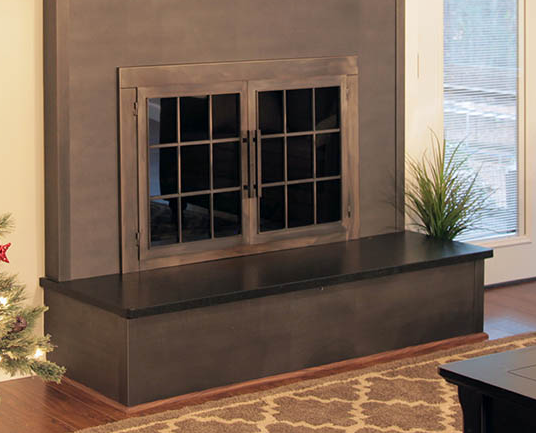Keep Your Gas Grill Clean for Years of Hassle-Free Cooking

The sound of lilting laughter, the clink of ice cubes and the scent of roasting meat wafting through the neighborhood – it’s grilling season. Are you ready?
If so, take off the cover and bust out the wire brush, because before you put another shrimp on that Barbie, it could probably use a little scrub down. Unless, of course, you cleaned it thoroughly before putting it to bed last winter (ahem)? Never fear, we’ve got the tips and tricks to make your grill shine brighter than Flava Flav’s and last for season after season.
You’ve likely read the owner’s manual to your gas grill, and maybe you’ve even wiped it down from time to time, but did you know, with regular maintenance that’s slightly more involved, you can extend the life of your grill – and improve the flavor of your food?
Tools of the Trade
First, you’ll need a few tools and cleaning supplies to get started:
- Wire brush or grill brush
- Grill stone or large pumice stone
- Rags and paper towels
- Cooking oil
- Dish soap
- Large bucket or wash basin
- Water
Great Grates
We recommend a thorough cleaning of your grates every time you use your grill to prevent the buildup of flammable residue –which also happens to be a breeding ground for food bacteria. Can you say salmonella? Yuck.
Make sure the grill is off, and, for added precaution, disconnect the propane tank. Clean grates thoroughly with a grill or wire brush while they’re still hot. Try the new grill brushes that dispense water to create a “steam cleaning effect. A plain wire brush, in good condition, with a little water sprinkled on it will do the trick, too.

A wire brush in good condition is your best weapon against the grunge.
When they’re clean, coat your chrome or cast iron grates with cooking oil. Apply with a paper towel and wipe off any excess. You don’t need to use much, but be sure to cover all the metal to prevent rust. Porcelain-coated metals need no “seasoning. However, check for chips and apply cooking oil to exposed metal. A quick coat prior to cooking helps prevent food from sticking.
It’s a Gas, Gas, Gas
Ok, well, maybe taking your grill apart for a good going-over isn’t your idea of a gas, gas, gas (with apologies to The Rolling Stones), but you’ll be surprised at how well (or better) your outdoor gas grill works when it’s all cleaned up.
Now, it’s time to get familiar with the inner workings of your gas grill.
Flame tamer, flavor bar, briquette, heat tent or vaporizer bar – whatever you call yours, be sure to clean off any cooking debris or built-up grease, or replace it if it’s not in good condition. Do not coat with oil after cleaning.
U Can Do This
While you have the flame tamer off, remove, check and clean your tube, U-shaped or other type of burners. Clogged burners lead to uneven heat distribution and significantly shorten their use. Soak burners in hot sudsy water to dissolve grease residue for about 10 minutes. Follow up with a wire brush to clean the “burner ports, i.e., the small openings where the gas exits, ensuring no debris or residue remains.
Now’s also a good time to look for cracks or other signs of wear. Replace if damage is significant.
Handle It
Remove any handles and knobs and let them soak in warm to hot sudsy water while cleaning the rest of your grill. Scrub off any dirt and debris, rinse and let air-dry. Replace in the proper location at the end of cleaning.
Grease Ain’t Good
Next on the cleaning list are the sure-to-be-delightful grease cups. This is the worst aspect of this whole task, but cleaning them is definitely worth the effort. An overflowing grease cup can stain your deck or patio and is a fire just waiting to happen. If you live in dry climes, or perennial drought conditions, it’s good common sense to keep on top of this chore.
And while we’re on the topic, be sure to always keep a fire extinguisher nearby when cooking outdoors. Here’s what to do in the event of a grease fire in your gas grill.
Scrape out all the goop from the grease cups and dispose or recycle as you see fit. Give the cups a good wash in hot sudsy water, rinse and let air-dry before replacing. While you’re down there, go ahead and scrape out the firebox and remove any grease and debris, then clean it with warm sudsy water and wipe it dry.
Rust Never Sleeps
Now that you’ve gotten the big bits out of the way, let’s take a look at the overall condition and exterior of the grill.
Scrape off rust with a wire brush, clean the area and apply a rust-retardant paint (see your manufacturer’s recommendation). Catch rust in time and you’ll prolong your grill’s chassis and other metal elements for seasons of use.
The Future Looks Bright
Everything’s nice and clean and you’ve put all the innards back into your gas grill. Reconnect your propane and fire up the burners. Inspect the flame to be sure you have even flame throughout the burner element. Let it run on “High for 10 minutes to burn off any residue and dry thoroughly.

Give that stainless steel its sheen back with a good scrubbing with hot, sudsy water and a non-abrasive cloth. Wipe dry, then replace the knobs, and cover when not in use.
Ah, now, what’s on the menu? Whatever it is, it’s sure to taste delicious. Happy grilling!
Original: http://gensuncasual.com/outdoor-living-tips-hacks-cleaning-gas-grill/


